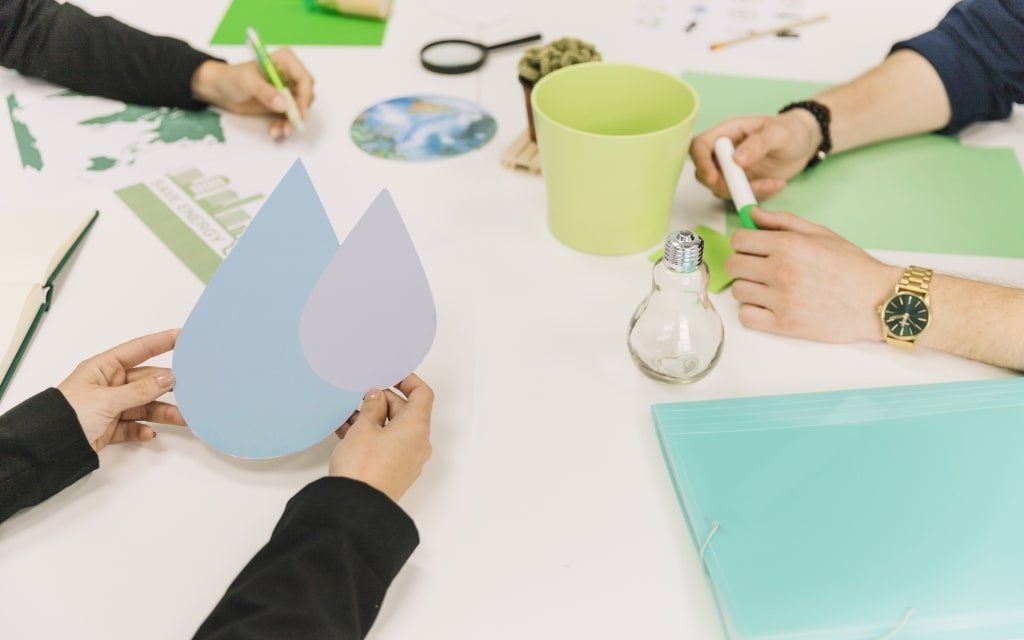The initial notion of sustainable development was established in 1972 as a result of damaging environmental and social effects by the industries around the globe. The origin concept itself comes from the report “our common future” published in 1987 named as Burland report. The report defined meeting the needs of the present without compromising with the future. Though it was well accepted industries found it hard to implement and looking at the present development we have not come far. Specifically fashion industry.
Below are few facts why we need to focus on sustainability:
A) The greenhouse gas concentrations are higher now than they have been for the past 800,000 years, and the amount is rising quickly. As a result, the climate is changing faster than life and weather systems can adjust.
B) Sea level rising – A prediction by NASA,global climate change, scientists who looked at nearly three decades’ worth of satellite readings predicted sea level along contiguous U.S. coastlines might increase as much as 12 inches (30 centimeters) above the waterline today by the year 2050.
As a result of a changing climate, the sea level has been rising globally for many years, and there is growing evidence to prove the statement. The latest findings are consistent with the longer-term prospects presented in an Interagency report published in February 2022. According to that research, which was created by a number of federal organizations, including NASA, the National Oceanic and Atmospheric Administration (NOAA), and the U.S. Geological Survey, sea levels are expected to increase significantly across the country over the next 30 years. They estimated that the East Coast would see an average rise of 10 to 14 inches (25 to 35 centimeters), the Gulf Coast would experience an increase of 14 to 18 inches (35 to 45 centimeters), and the West Coast would experience an increase of 4 to 8 inches (10 to 20 centimeters).

C) Droughts are the biggest threat to livestock and crops in almost every region of the world, affecting an estimated 55 million people annually. The livelihoods of people are in danger, disease and death risk are raised, and mass migration is sparked by drought. 40% of the world’s population suffers from water scarcity, and by 2030, 700 million people could be at risk of being evacuated due to drought.
D) Water pollution – The oceans have turned into a garbage dump. The ocean receives millions of tonnes of trash. Up to 12.7 million metric tonnes of plastic entered the ocean in a single year, according to the United Nations Environmental Programme. Oil spills kill anybody and everyone. More than 14 species of whales and dolphins were affected by the 2010 Deepwater Horizon oil disaster in the Gulf of Mexico, which resulted in the deaths of more than 5,000 of these magnificent animals. While military sonar, oil and gas drilling, marine construction, and noise from shipping disrupt whale and dolphin communication, their ability to find food, and raise their stress levels. Their immune systems and capacity to reproduce are affected by elevated stress levels.

These are a few of many problems that the world is facing right now. This must explain why we need sustainable developments to be implemented in every possible way.
Now the question comes: what are the ways to achieve sustainability?
A) Address the issues – Addressing the issue is the first step. One we understand and analyze the problem we will be able to solve and come up with solutions for the specific problem. This must be done in a collective and private way by the industries.
B) Collaboration – There might be issues which are beyond the control of an individual company in that scenario collaboration beyond sectors will help achieve a solution.
C) Innovation – Constant innovation in the field of textile and design is the key.
D) Circular economy – This concept has proven itself to be an important aspect in sustainability.Linear structure which revolves around production and distribution does not involve post consumer cycle of a product.That is where circular economy comes into the picture.
At the end one must remember sustainability is here to stay. It is everyone’s responsibility to save our planet. Be it consumers or producers one must research. While consumers must be aware themselves about sustainability the producers must inculcate ethical and sustainable values within their supply chain. Industries without any sustainable and ethical values will be irrelevant in future market.



